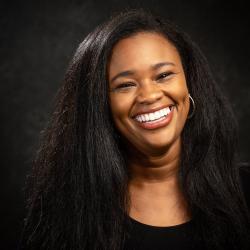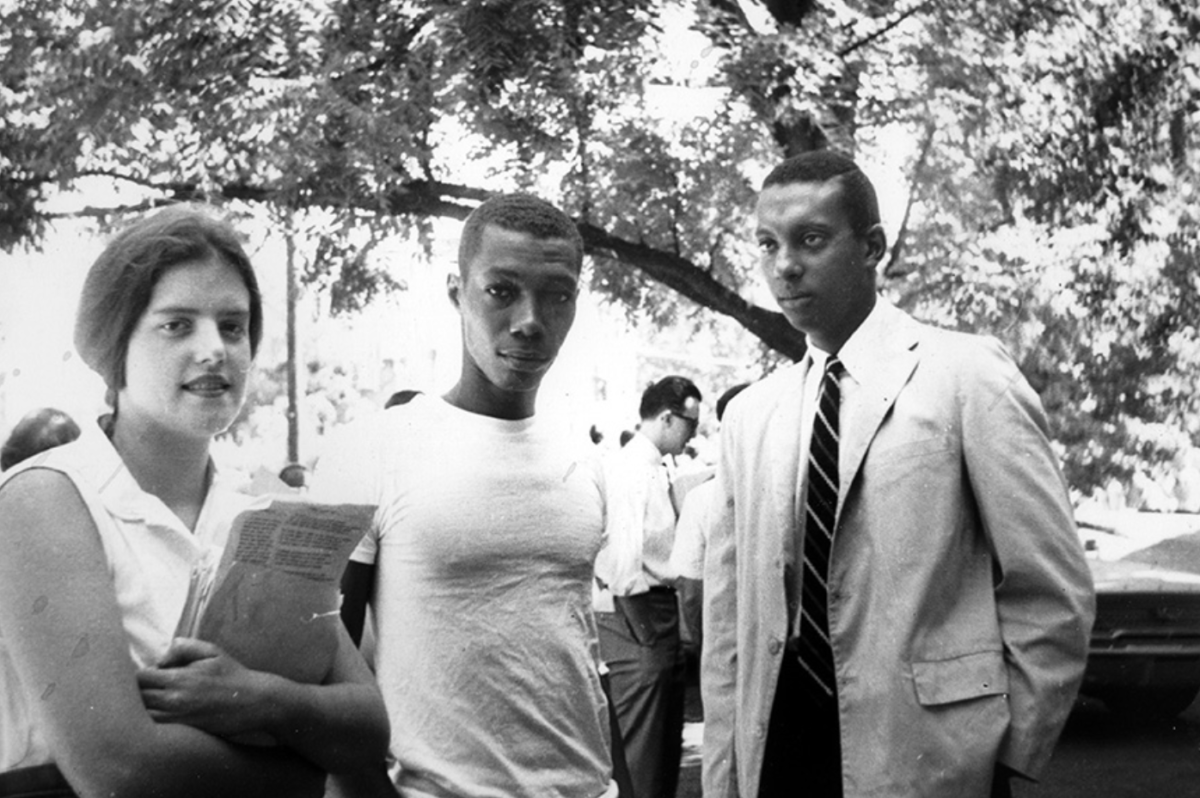How did a multiracial, multigenerational, and interfaith group of neighbors in the most populous Texas county defy expectations to galvanize the second-largest midterm election turnout in thirty years?
On a ballot that pitted Republican governor Greg Abbott against Democratic challenger Beto O’Rourke, and Democratic congressman Vicente Gonzalez against Republican representative Mayra Flores and Harris County judge Lina Hidalgo in a tight race for reelection, this midterm attracted millions of in-state and out-of-state dollars from donors hoping to influence election results that would ripple statewide.
And while statewide turnout for early voting in this midterm reached just 31 percent (about 7 percentage points below what it was in 2018), a closer look at Harris County, where voter turnout reached 42 percent, tells a different story.
That story begins with nonpartisan coalition Houston in Action and its twenty-five-plus member organizations of Black, Latinx, and Asian American and Pacific Islander (AAPI) voters across Harris County who came together to break down barriers to voter participation in an effort they called “Grow the Circle.”
In addition to a field strategy that included more than eight hundred events and sixty-five thousand face-to-face and phone or text conversations, the coalition made the decision to integrate a digital strategy to expand their organizing with the help of Backbone Digital Leaders, a digital marketing and organizing agency conceived by Black women, to increase their chances of reaching every voter.
Houston in Action’s Grow the Circle campaign sought to increase voter registration and voter turnout among communities of color, young people, LGBTQ+ people, and other communities of focus, because they want to build an electorate that’s reflective of the growth and diversity of the people of Houston.
This focus is evident in Houston in Action’s internal organization, which includes a variety of “member communication coordinators” who build intimate, authentic relationships with community members over the course of several years. To recruit participants for this campaign, these member communication coordinators reached out to Houston in Action’s entire coalition of more than fifty community organizations via emails, phone calls, and in-person visits to describe the campaign and offer its value proposition: an opportunity to exponentially amplify the messages their blockwalkers were bringing to the front doors in each of their neighborhoods.
In total, twenty-six of the fifty groups expressed an interest in participating, with others declining due to the capacity challenges so many grassroots organizations face. Houston in Action’s member communications coordinators were able to address some of these challenges by meeting members where they were: some even visited homes with cameras in hand to assist those with mobility challenges.
By offering members the chance to expand their organizing footprint as trusted messengers for each of the Black, Latinx, and AAPI groups, Houston in Action was able to ground this campaign in a participation strategy that centered on years of deep relational organizing—a tactic that would continue throughout and beyond the campaign.
By treating the leaders of these organizations as the subject-matter experts and micro-influencers of their own neighborhoods and communities, we asked each of them to do what other influencers do all the time: turn their phones on themselves for the purposes of a unique digital ad campaign.
For this ad campaign, we asked them to embrace their identities as some of the most trusted sources of information in their families, schools, workplaces, churches, synagogues, mosques, and communities by answering a specific question. This question was simple, straightforward, and intended to support their efforts on the ground: Why are you knocking on doors this election?
Inspired by this question, community leaders uploaded a series of personal responses as well as responses from members of their organizations. Every two weeks, Backbone would edit, caption, and cycle these videos into a digital ad campaign on Facebook, Instagram, and high-traffic websites across Harris County.
Again, one of the most common challenges faced by grassroots organizations is capacity building: maintaining volunteers, managing time constraints against full-time jobs, and technical and accessibility challenges. Houston in Action staff supported several groups by offering reminders with deadlines and by utilizing the Houston in Action social media account for folks not yet set up to run ads across these platforms.
To maintain momentum, these rolling video submissions were punctuated by reminders and weekly meetings to view each other’s content, swap tips, discuss best practices, and receive ongoing analytics updates from our team related to the progress of the ad campaign and voter turnout.
“Houston in Action supported Backbone’s coordination with the production and distribution of our network’s ‘get out the vote’ 2022 election videos, seen by millions of potential voters in our area, with tremendous efficiency and effectiveness. The team was present every step of the way, from onboarding and personalized workshops to informative share-backs after the campaign, to support dozens of our partnered organizations in their mission to mobilize Houstonians in the upcoming election,” said Davis Mendoza Darusman, Houston in Action’s Latinx member communications coordinator.
“Staff members on the communications team were super supportive in the efforts to create a strong digital presence,” said Aris Brown, the group’s narrative change and media manager. “Even if that meant showing up to members’ events and recording videos on the spot, following up with emails, or simply hyping them up in the background, our communications coordinators worked hard to increase our members’ capacity to sustain a several-months-long digital campaign.”
Over the course of our six weeks together, members’ responses reflected the concerns of everyday Houstonians: voter access, education, immigrant rights, and more.
By translating more than 150 videos in up to seven languages, captioning them to ensure accessibility for people with disabilities, and using highly targeted data segmentation to advertise the content to voters in these organizers’ canvassing routes via Facebook, Instagram, and the websites they frequented, we were able to build on their daily door knocking, phone banking, and text banking by reaching the same voters they were speaking to in real life (or IRL) online.
“I was on the bus, and a young lady and her guy friend kept looking at me and then down at their phone,” said Tanuke “Tangi” Smith, founder of Texas Federation of the People. “She told me she saw a video of me talking about the voter guide. It had been told to them that their voting [rights] had been taken away indefinitely because they were on [parole]. It was information like that video that made them check.”
Smith said that was the third time she had been approached in less than a month. The first person who approached her said it was her video that got him to go out and vote.
Our digital advertising campaign was promoted to more than half a million unique voters in Harris County during the final four weeks leading up to the November election. The voters we reached with the ad campaign were Black, Latinx, and AAPI, achieving Houston in Action’s goal of reaching a target audience reflective of the diversity of Harris County.
This audience’s high rate of engagement with the content was just one metric that reflected their enthusiasm. This investment of about $150,000 in digital ads produced from the video submissions earned more than seven million impressions from voters in Harris County during the campaign, amassing more than three million video views across all channels.
The high engagement was further proven by the high video completion rate we saw across all platforms, but specifically on programmatic channels like mobile in-app video, where our videos had an 80 percent average completion rate, compared to an industry benchmark of 70 percent.
In the end, the ultimate metric was voter turnout. The Grow the Circle campaign reached 40 percent of registered voters in Harris County, according to information that matched individually identifiable data received from canvassing and outreach platforms back to the voter rolls. More than 150,000 people who were engaged through this campaign voted. With these numbers in mind, we think a strong case can be made that Houston in Action helped drive a significant portion of this historic voter turnout.
Houston in Action is committed to galvanizing an electorate that reflects the diversity of the voters it serves, and this nonpartisan campaign successfully set out to increase voter turnout among communities of color, young people, LGBTQ+ people, and other communities too often pushed to the margins and forgotten after Election Day.
By bringing together diverse leaders and organizers, it is safe to say that this campaign better equipped organizations across Greater Houston to work together while reaching and engaging the communities they serve to build long-lasting collective power and community.
The work Houston in Action is doing with their member organizations is critical to our work as digital organizers. With this in mind, here are six takeaways for organizations hoping to replicate this success in 2024.
-
Consider who’s NOT being reached. By partnering with well-known community organizations like the Mahogany Project, the Chinese Community Center, Latino Learning Center, and Texas Federation of the People, we were able to reach voters in diverse communities across Harris County with familiar faces and common languages, strengthening our digital organizing work overall.
-
Trust community organizers. Our community organizers are closest to the solutions our communities seek, as they are often closest to the challenges they are experiencing. Partnering with them to expand their reach and support their outreach goals is a smart way to reach voters online. In this campaign, we leaned on biweekly meetings to hear feedback from the field while providing instantaneous messaging through Slack for real-time troubleshooting on the ground.
-
Be accessible. Organizers were encouraged to record videos in their native language. These videos were then translated and captioned in multiple languages to ensure that everyone who watched them could understand the message.
-
Be inclusive. To support organizations who were not able to record their organizers in the time required, Houston in Action recommended a personalized boilerplate video for each organization to ensure that all groups were included in the campaign.
-
Meet voters everywhere they are. This campaign partnered with groups specializing in data management, media planning, and ad trafficking to target a diverse and expansive voter list both in the field and online. Utilizing a proprietary technology that matched the voter file with targeted advertisements on any mobile device, this cross-collaboration ensured that voters saw the same organizers’ faces at their doors that they did on their smartphones.
-
Remember that progress is incremental. While we celebrate a historic turnout in this past midterm election, it’s important to remember that our work is far from over. Groups in Harris County and in other areas have since reached out about participating in or facilitating a similar digital organizing campaign in the next election cycle, which is already underway. This is the sort of coalition building that should take place not just every election but every day in between to manifest the sort of change voters across the country are demanding.





